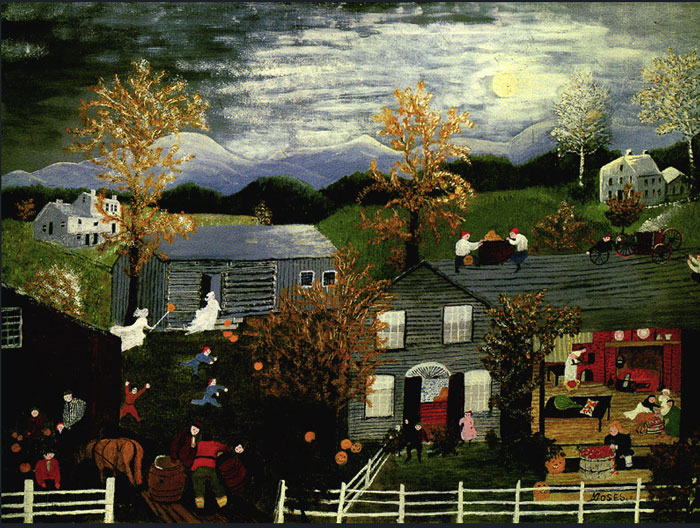
An important study dispels the myths and negative stereotypes about artists living in lonely, selfish desperation, especially as they age. The Research Center for Arts and Culture (RCAC) at the National Center for Creative Aging (NCCA) established that artists suffer less loneliness and depression than the general population. According to the study mature artists are highly functioning members of society and are twice likely to do volunteer work than others.
The study proved the benefits of the ART CART, a program that serves mature artists. The research also proved general benefits of art-making and creative collaboration for the aging population.
About ART CART
ART CART is a project launched by RCAC in 2010. It has locations in NYC and Washington DC. It is establishing a replicable methodology and a comprehensive toolkit for implementation in other communities throughout the U.S.
Known as ‘an education in hope’ “ART CART provides aging artists with direct, hands-on support and guidance to manage and preserve their life’s work, and by providing students with an inter-generational, educational experience and mentorship in the preservation of artistic legacy. Over the course of an academic year, several teams of students, each working with a single visual artist, will document a substantial number of works – collecting both high-quality digital images as well as relevant historical, biographical, and artistic background information.”
About The Study
A Feasibility Study for a National Model of Health Promotion and Wellness Among Older Adults administered eight measurements in social inclusion, morale, productivity, and safe functioning. The study took place in a studio setting in New York City as well as in Washington, DC.
Research participants were 62 years old or over. The mean age was 78. Nineteen older artists participated in the ART CART: SAVING THE LEGACY project documenting their work. The control group consisted of sixteen older adult artists who did not participate in the ART CART program.
The original research was funded by the Fan Fox and Leslie R. Samuels Foundation. The data analysis and dissemination report was funded by the National Endowment for the Arts.
The Survey Shows The Benefits of Art-Making As We Age
Results comparing ART CART participants to general population surveys (National Long Term Care Survey) showed that at baseline, ART CART participants reported statistically significant better physical capacity compared to older respondents. Sixty percent do volunteer work which is twice the percentage of general population.
None of these individuals presented symptoms of depression, compared to 11% to 16% range of people with clinically relevant depressive symptoms reported in the 2008 Health Retirement Study.
Results of the depression, morale and loneliness measurements were also compared to Dr. Gene Cohen’s Creativity and Aging study of choristers 65 and over and were almost identical to the RCAC’s findings. These finding suggest that both professional and avocational art-making and participation may contribute to higher functioning.
Study Shows Artists As Extremely Capable
In addition to the health findings, a program evaluation revealed the importance of the core issues of identity and self-esteem, life review, and the ability to learn new tasks. It concluded that the artists are now able to produce their art, market it, donate and sell it, apply for grants and protect their legacies by arranging for wills and estate plans.
For more information about ART CART visit the The Research Center for Arts and Culture (RCAC) artsandcultureresearch.org

Hello Renee,
Can you cite the reference from which this claim comes?
The Research Center for Arts and Culture (RCAC) at the National Center for Creative Aging (NCCA) established that artists suffer less loneliness and depression than the general population.
Thank you so much,
Thomas, Thank you for your question. This article was originally published in 2015; and the facts were taken from a report we received from either Art Cart or RCAC. You will find a study discussed here on https://artsandcultureresearch.org/portfolio/art-cart-saving-legacy-national-feasibility-study/. On that page you can download the complete 106 page report.
walt Whitman once wrote that the artist brings the visible from the invisivle- I agree, specially being a sculptor takes a lot of time and effort materializing those images.
Elaine, thank you. I agree with you. Most people are unhappy with the jobs they go to every day. How fortunate you are that you have found a career in which to excel and receive tremendous gratification every day. We never “go to work” because we derive so much pleasure in our professions.
Renee, thank
You for all you do. I was featured in your work, “Artists helping artists” a few years ago. I enjoy seeing your work. Karolyn Farrell
Most artists, including myself, have a strong passion for life. We are enthusiastic about the things we see, and possess wonder and purpose in our lives. When you look around and nearly everything you see inspires you with a creative idea, you have no choice but to experience joy. As for artists being less lonely, I think this is because artists often work in solitude, but this solitude is filled with creativity and a contemplative activity that produces inward happiness, focus, and contentment while it is being done. After it is done, we experience a sense of release, calm, and accomplishment. Creating art is very cathartic; how many people get to feel that kind of catharsis on a daily basis?